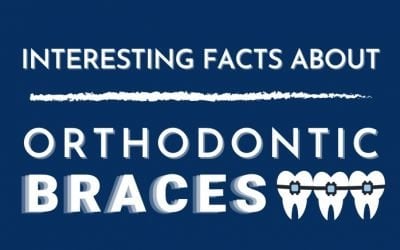Teeth Development in Children

Types of teeth
- incisors – the front teeth located in the upper and lower jaws. Each incisor has a thin cutting edge. The upper and lower incisors come together like a pair of scissors to cut the food
- canines – the pointy teeth on both sides of the incisors in the upper and lower jaws; used to tear food
- premolars – which have flat surfaces to crush food
- molars – these are larger than premolars, with broad, flat surfaces that grind food.
Teething
- The two front teeth (central incisors) in the lower jaw are usually the first to erupt. This occurs somewhere between the ages of six and 10 months.
- The two front teeth (central incisors) in the upper jaw erupt between the ages of eight and 13 months.
- The lateral incisors, which are the teeth on each side of the central incisors, erupt in both the upper and lower jaws between the ages of eight and 16 months. The lower set tends to erupt before the upper set.
- The first set of upper and lower molars (flat-surfaced back teeth) erupt between the ages of 13 and 19 months.
- Canine or ‘eye’ teeth sit beside the lateral incisors and erupt in both the upper and lower jaws between the ages of 16 and 23 months.
- The second set of upper and lower molars erupts between the ages of 25 and 33 months.
Generally, the average child has their full set of 20 primary teeth by the age of three years.
Managing the teething process
- massage – gently massage the gum with clean fingers or a soft, wet cloth
- chilled (not frozen) teething rings or rusks – pressure from a cold object can relieve discomfort from teething. Do not sterilise plastic teething rings in boiling water or dishwater, unless specified by the manufacturer. Be sure to check product information before buying teething rings. Avoid the ones that use a plastic softener called ‘diisononyl phthalate’
- unsweetened teething rusks or sugar-free teething biscuits – these can be given to infants over six months who have started eating solids
- pain-relieving medications – paracetamol is effective for children. Ibuprofen may also be effective, but it causes more frequent adverse reactions in children
- dry the drool – the skin around the mouth, particularly the chin area, can become irritated. Gently wipe this away with a soft cloth throughout the day.
Some treatments should be used with caution or not at all. These include:
- teething necklaces – amber is believed by some people to release healing oil on contact with warm skin. The oil is thought to have a soothing or an analgesic effect. Although amber teething strings or necklaces are designed to be worn around the neck, wrist or ankle, they have been incorrectly used to chew on.
The ACCC recently issued a product safety about the amber teething necklaces, warning of possible choking and strangulation hazards. It advised parents to consider other less risky methods of providing relief from teething.
- teething gels – common teething gel formulations contain 8.7–9.0 per cent of the ingredient choline salicylate. Salicylate is related to aspirin. The use of aspirin for children younger than 16 is not recommended because in some children it has been known to cause Reye’s syndrome – a rare but potentially lethal condition that can cause liver and brain damage.
Although there has not been a reported case of Reye’s syndrome associated with the use of teething gels, the general consensus in the UK is that it is a risk not worth taking when there are alternatives available.
Teething gels containing benzocaine are also not recommended for use in children.
Research also suggests that teething gels may not relieve teething pain, rather that the act of massaging it into the gum is what provides relief.

Caring for primary teeth
Some parents may feel that caring for baby (primary) teeth isn’t as crucial as caring for adult (permanent) teeth, simply because baby teeth are designed to fall out anyway.
However, baby teeth are very important. They enable children to chew food and speak properly, and they reserve the spaces in gum tissue for future adult teeth.
Decay in teeth is preventable. Good oral hygiene habits and a healthy diet, established early, significantly decrease the risk of developing dental decay.
Tips for looking after baby teeth and developing good oral hygiene habits include:
- from birth – clean your baby’s mouth and gums by wiping with a soft cloth
- first toothbrush twice a day with a soft toothbrush and plain water
- 12 months – take your child for their first dental visit
- 18 months – add a pea-sized amount of low fluoride or children’s toothpaste to the brush, and encourage your child to spit out the toothpaste (and not swallow or rinse)
- two and a half years – begin flossing between any teeth that touch
- four to five years – start teaching your child to brush their own teeth
- six years – switch to adult toothpaste and continue to encourage your child to spit it out and not rinse. Start teaching your child to floss their own teeth
- eight years – allow your child to brush and floss unsupervised. Continue regular dental check-ups.
Decayed baby teeth need professional dental treatment and, in some cases, specialist treatment in a hospital under a general anaesthetic. If neglected, decayed baby teeth can lead to mouth pain, dental abscess, and problems with the surrounding teeth. Severe decay in baby teeth can affect eating and sleep, which can slow growth.
If a baby molar is prematurely lost (due to severe decay), the baby teeth next to the missing tooth may drift into the gap and create spacing problems for the adult tooth when it comes through.
Loss of primary teeth
From the age of about six years, baby teeth start to become ‘wobbly’ and fall out to make way for adult teeth. It is perfectly normal for a child to lose their first tooth up to a year or two earlier or later than six years of age. Girls generally lose teeth earlier than boys. The first tooth to fall out is usually located in the front of the lower jaw.
Losing baby teeth can be unsettling and painful for young children. Suggestions for parents include:
- Reassure your child that losing baby teeth is a natural process and new adult teeth will come in their place.
- Use cold compresses or over-the-counter anti-inflammatory or pain-relieving medication to help relieve loose tooth pain. Ask your dentist or pharmacist for recommendations on appropriate medication for your child.
- Offer reassurance – it’s normal for gums to be tender and bleed a little, although some children experience little or no discomfort while losing their teeth.
- Make use of the Tooth Fairy. This mythology has lasted a long time for a good reason. If the idea of getting a coin in exchange for a tooth softens the idea of tooth loss for your child, then go ahead and use it.
The eruption of permanent teeth
Permanent teeth are also known as adult teeth or secondary teeth. The permanent teeth start to develop in the jaws at birth and continue after a child is born. By about 21 years, the average person has 32 permanent teeth, including 16 in the upper jaw and 16 in the lower jaw. (In some cases, the third molars – commonly called wisdom teeth – do not develop or do not erupt. Consequently, a set of 28 permanent teeth is considered normal too.)
At about the age of six years, the first permanent molar teeth erupt. These four molars (two in each jaw) emerge behind the child’s existing primary teeth. Other permanent teeth, such as the incisors, canines, and premolars, erupt into the gaps in the gum left by shed primary teeth.
Like primary teeth, the timing for when the permanent teeth come through differs from one child to the next. Generally, the order of eruption and a rough timeline for each type of permanent tooth is:
- first molars – between six and seven years
- central incisors – between six and eight years
- lateral incisors – between seven and eight years
- canine teeth – between nine and 13 years
- premolars – between nine and 13 years
- second molars – between 11 and 13 years
- third molars (wisdom teeth) – between the ages of 17 and 21 years, if at all.
Mouthguards protect children’s teeth
help protect teeth and keep dental injuries to a minimum, particularly when playing and training for contact sports. All children playing contact sports should wear a mouthguard, even primary school-age children. Professionally fitted mouthguards are comfortable, allow speech and do not restrict breathing.
Suggestions for parents and carers include:
- Avoid do-it-yourself ‘boil and fit’ type mouthguards – they are unlikely to provide effective protection. See your child’s dentist have a customised mouthguard fitted.
- Make sure your child wears their mouthguard at training and during the game. It may help to talk to their coach about it as all sporting clubs are encouraged to have a compulsory mouthguard policy.
- Update your child’s mouthguard every 12 to 18 months to ensure that it still fits and is fully effective. Take it to your regular dental visit to have it checked for wear and tear.
- Keep the mouthguard clean.
- When not in use, store the mouthguard in a rigid container and away from heat to make sure it maintains its shape.
Where to get help
- Your dentist
- Australian Dental Association ‘Find a ’ or Tel. (03) 8825 4600
- Central Coast Orthodontics Tel. (02) 4327 9488
DISCLAIMER:
The content has been made available for informational and educational purposes only. Central Coast Orthodontics does not make any representation or warranties with respect to the accuracy, applicability, fitness, or completeness of the content.
The content is not intended to be a substitute for professional personal diagnosis or treatment. Always seek the advice of your dentist or another qualified health provider with any questions you may have regarding a dental or medical condition. Never disregard professional advice or delay seeking it because of something you have read or seen on the Site.
Related Articles
Unfinished Smiles Welcome Here – We’ll Pick Up Where You Left Off
Is Smile Direct Club’s insolvency leaving your teeth realignment process stranded? As Invisalign Diamond Plus providers…
Interesting Facts About Orthodontic Braces
Wanting to get orthodontic braces but feeling unsure because you don't have knowledge about its...
Three Benefits of Invisalign
Did you know that aside from being an option for straightening your teeth, there are also benefits...
Metal Braces: Does This Traditional Dental Technology Have a Future?
Of all the medical professions, dentistry has always generated the most fear and continues to;...





